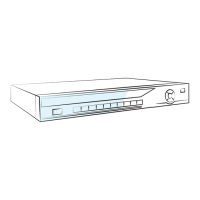
Do you have a question about the BCS Line and is the answer not in the manual?
Specifies the necessary conditions for installing and operating the device, including environmental and placement guidelines.
Details requirements for power supply, battery usage, and electrical connections to ensure safe operation and prevent damage.
Introduces device initial settings like boot up, initialization, password reset, and quick settings.
Covers camera connection, IP address changes, H.265 auto-switching, IP export/import, and remote initialization.
Explains how to search and play back recorded files using various search types and playback controls.
Details Artificial Intelligence features including AI Search, Face Detection, Face Recognition, IVS, and various analytics.
Allows searching, viewing, and backing up alarm information by event type, time, and search criteria.
Covers video analysis techniques like motion detection, video loss, tampering, scene change, and PIR alarms.
Enables viewing, searching, and backing up system logs for troubleshooting and audit purposes.
Covers device maintenance tasks like auto-reboot, exporting/importing settings, and system updates.
Configuration of network parameters like IP address, subnet mask, default gateway, and DNS settings.
Enables automatic port mapping between LAN and WAN for device access via IP address.
Provides a comprehensive view of device security status, scanning user, service, and module status.
Includes firewall, account lockout, and anti-DoS attack features to strengthen device security against threats.
Manages user accounts, including adding, modifying passwords, and setting permissions for system access.
Allows resetting the admin account password using security questions and answers for account recovery.
Configures display settings like time title, channel title, image transparency, and resolution for the output.
Allows configuring a tour of selected channels to repeat playing videos in sequence with customizable display intervals.
Enables adding, listening, renaming, and deleting audio files, and configuring audio volume settings.
Configures settings to play audio files during defined time periods, with options for interval and loop settings.
Details how to connect the device to the network and configure PC/device IP settings.
Guides users through accessing the device's web interface using its IP address and default credentials.
Network protocol for assigning temporary IP addresses to computers on a network.
Wireless networking technology using radio waves for high-speed internet and network connections.
Lists common issues and solutions for NVR boot-up problems, including power, connection, and hardware errors.
Addresses problems with searching local records, such as HDD issues, software compatibility, or overwritten files.
Provides suggestions for creating strong, secure passwords to protect device access and data.
Recommends keeping equipment firmware and client software up-to-date for the latest security patches and fixes.
